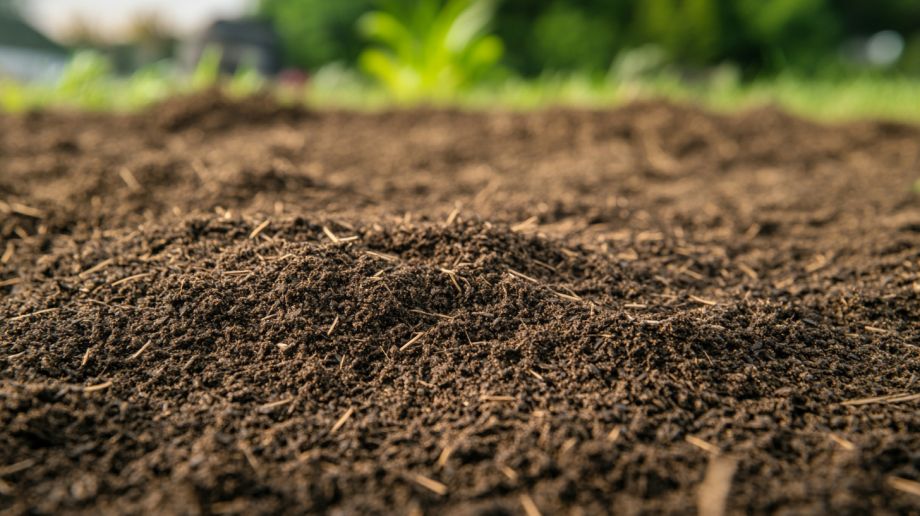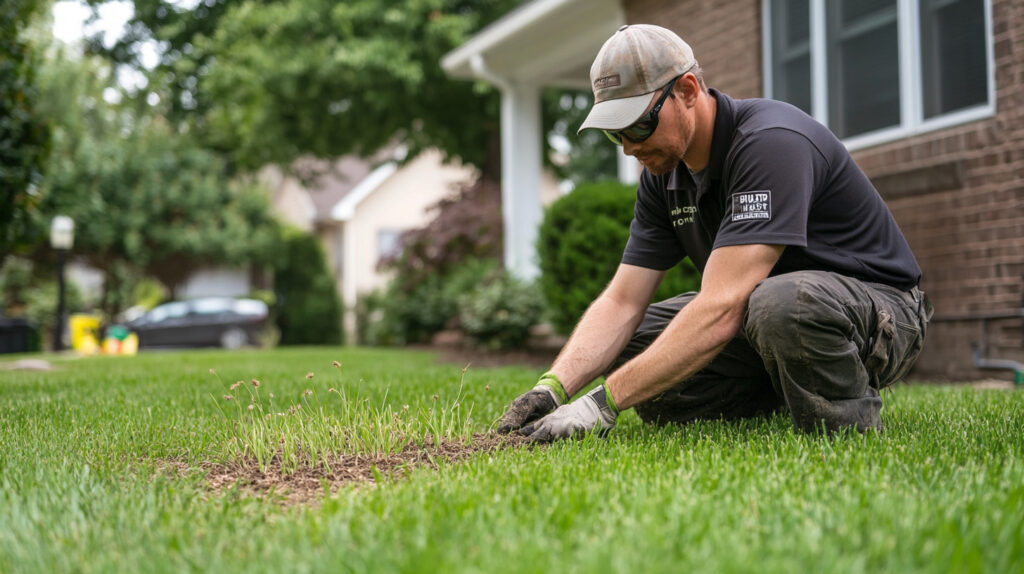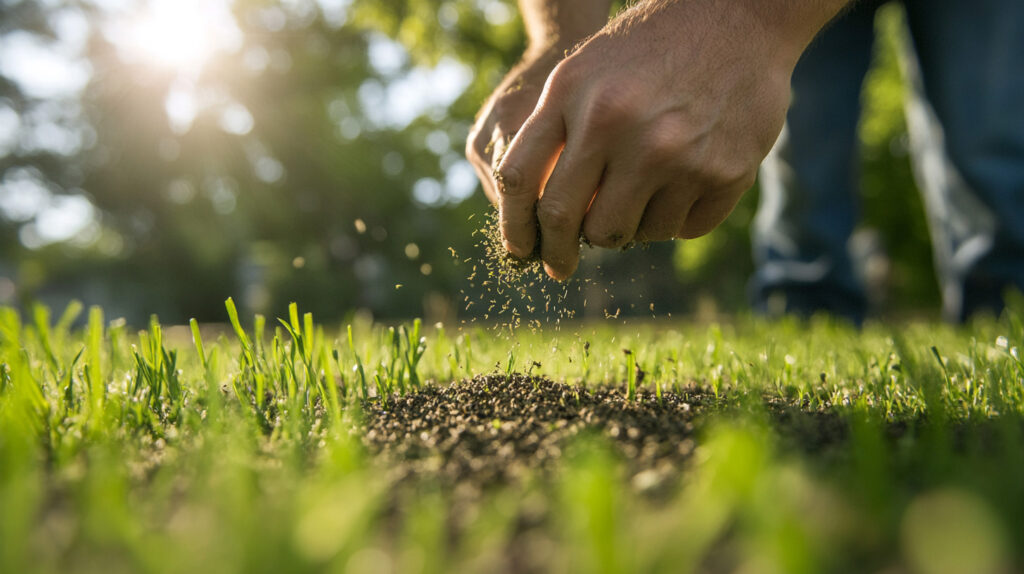
Will Lime Kill New Grass Seed? (Explained)
Wondering if lime will kill new grass seed?
It’s a fair question, especially when you’re putting in all that effort to get your lawn looking great.
Seeding a lawn isn’t exactly a walk in the park, and the last thing you want is to accidentally mess it up with something like lime.
Don’t worry, though – lime won’t kill new grass seed!
In this post, I’ll go over why lime won’t kill new grass seed, and go over potential risks of your using lime and the best practices for using it.
Lime Won’t Kill New Grass Seed
Let’s cut to the chase: lime isn’t going to kill your new grass seed. In fact, when you use it right, lime can actually help create a better home for your grass to grow in.
Lime’s main job is to adjust your soil’s pH and make it less acidic.
This happens slowly, so it doesn’t mess with your seeds sprouting.
Also Read: Does Crossbow Kill Clover?
Many types of grass actually like soil that’s a bit on the alkaline side, so lime could end up being your lawn’s new best friend.
How Lime Effects On Your Lawn
Lime is basically ground-up limestone rock. It’s got calcium carbonate in it, and sometimes magnesium carbonate too.
When you put it on your soil, it works to make it less acidic over time.
This pH change can be great for your lawn because it affects how your grass gets nutrients and how healthy the soil is overall.
Just remember, lime isn’t like a magic wand. It takes its sweet time to work – we’re talking weeks or even months. This slow-and-steady approach is actually good news for your new grass seed.
It means your seeds won’t suddenly find themselves in a totally different environment.
Potential Risks Of Applying Lime With New Grass Seed
While lime generally plays nice with new grass seed, there are a couple of things to keep in mind if you’re thinking about using them together.
Knowing about these potential hiccups can help you avoid any issues and get the best results:
#1 pH Fluctuations
One thing to think about is that putting lime down at the same time as your seeds might cause some small, temporary pH changes right at the soil surface.
This could potentially stress out your baby grass as it’s coming up, but it probably won’t stop your seeds from sprouting altogether.
Also Read: Is GrubEx Safe For Dogs?
These little pH changes happen because the lime starts reacting with the soil right away, even though you won’t see the full effects for a while.
It’s not likely to cause major problems, but it’s something to be aware of.
#2 Interfere With Seed-To-Soil Contact
Another thing to consider is how you’re putting the lime down.
If you go overboard in some areas or spread it unevenly, you might end up with patches where the seeds don’t make good contact with the soil.
This seed-to-soil contact is super for successful germination.
Seeds need to be in direct contact with moist soil to absorb water and begin the germination.
A thick layer of lime between the seed and soil can interfere with this contact. If there’s too much lime in the way, you might end up with patches where the grass doesn’t grow as well.
Best Practices For Using Lime When Seeding

So, how do you use lime without messing up your grass seeds?
Ideally, you’d put lime down a few months before you plant your seeds. This gives it time to start working on the soil pH.
But if you can’t do that, it’s usually okay to put lime down when you’re seeding or soon after.
If you’re putting lime down with new seed, try to spread it evenly and don’t overdo it. A good rule to follow is using no more than 50 pounds for every 1,000 square feet of lawn in one go.
If you need more based on your soil test, you can always add more later.
Using a spreader is a good idea, and you might want to go over the area twice in different directions to make sure it’s even.
After you’ve put the lime down, rake the soil lightly to mix it in and create a nice bed for your seeds.
Factors That Influence Lime’s Impact On Seeds
A few different things can affect how lime interacts with your new grass seed.
Understanding this can help you make better choices about when and how to use lime:.
Current Soil pH Levels
The pH of your soil right now is super important.
If your soil already has the right pH for grass (usually between 6.0 and 7.0), you might not need to add lime at all. Always start with a soil test before you put any lime down.
Also Read: Liquid or Granular Fertilizer
This will tell you exactly how much lime your soil needs, if any.
Type Of Lime Used (Fast-Acting Vs. Regular)
The kind of lime you use can make a difference too.
Fast-acting lime products might change the pH more quickly, which could potentially stress your new grass more than regular lime.
Regular lime works more slowly and might be a safer bet when you’re also planting seeds.
Grass Species Being Planted
Don’t forget about the type of grass you’re planting!
Different types of grass like different soil conditions, so it’s good to know what kind of grass you’re working with.
Plus, some types of grass are more easygoing about pH changes than others, which can affect how they respond to lime.
Alternatives And Considerations

If you’re still nervous about using lime when you seed, you’ve got options. These alternatives can help you improve your soil without risking your new grass seed:
Wait A Few Weeks
One option is to hold off on the lime until your new grass has had a chance to get established.
This usually means waiting about 4-6 weeks after you’ve planted your seeds.
By then, your grass will have stronger roots and will be better equipped to handle soil changes.
Testing Soil Before Liming
Before you put any lime down, it’s really important to test your soil.
This will give you the lowdown on your soil’s current pH and nutrient levels, so you can make smart decisions about whether to use lime and how much.
A soil test can also help you avoid using too much lime, which could throw off the nutrient balance in your soil.
Other Soil Amendments To Consider
Depending on your soil test, you might find that your lawn needs something other than lime.
For example, if your soil is low on certain nutrients, you might need to focus on fertilizer instead of changing the pH.
Always base your decisions on what your specific lawn needs.
Bottom Line
So, there you have it! Lime won’t kill your new grass seed if you use it correctly.
Sure, there are a few things to keep in mind, but the benefits of getting your soil in tip-top shape usually outweigh the small risks.
Just remember to test your soil, use the right amount of lime, and think about when you’re applying it. If you do all that, you’ll be well on your way to having a lawn that’ll make your neighbors green with envy.
Happy planting!








